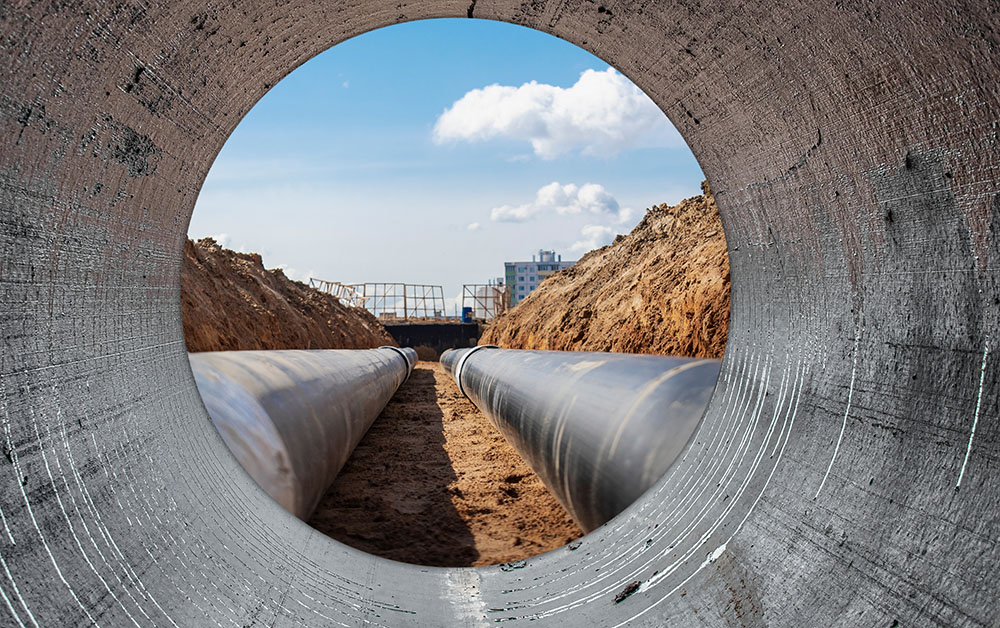The nation is beginning to witness an acceleration in infrastructure projects ranging from energy to water, sewage, and conservation across the country. Even with material and worker shortages across the construction sector, spending on infrastructure projects has accelerated either out of opportunity or out of the emergencies created by the global energy crisis.
Where’s the Money Going?
Construction spending for August was the most aggressive in water supply and conservation projects. Total spending on water projects was up 23.3% year-over-year and was the fastest growing segment with nearly $25 billion in annualized spending underway.
Conservation and development projects were also seeing expanded funding with an 18% growth rate year-over-year on $9.3 billion in annualized spending. Highway and street spending was slowing, picking up pace with growth of 2.3% year-over-year on nearly $33 billion in spending across the country.
Total spending (both public and private) on power production in the US is down 12.7% year-over-year on $107 billion in spending. Public spending on power projects is up 7.4% year-over-year but on just $9.5 billion in spending. Despite growing demand for energy resources in the US and a global crunch which is pushing a record amount of US petroleum exports out of the country, spending is slow to pick up the pace on the private sector side of the equation (which represents nearly 93% of total spending).
Infrastructure Investment and Jobs Act
The November 2021 passage of the Infrastructure Investment and Jobs Act will begin to play a role with a continuation and acceleration of some of the front-loaded spending starting to hit “shovel ready” projects. Enough time has also passed for some states to determine what projects would qualify for funds under the Act and to put together designs and planning to begin those projects. Spending in those categories will pick up pace as time allows for projects to become part of broader strategic plans for many states and local municipalities, applications are filed, and funding is put in place.
National Drought
The national drought has also brought focus and attention on the growing deficits in many parts of the country. Getting water resources to nearly 40 million households in the southwest US could become a much bigger chore if weather patterns don’t break the 10-year drought that has heavily impacted the Colorado River basin and communities downstream. In 2022, even the Mississippi River has faced historic drought conditions in many areas and these situations have increased the emphasis on water security, hydroelectric reliance, and the need to build contingencies.
Growth
Lastly, some communities are growing rapidly, according to estimates by the Census Bureau. Estimates suggest that some communities in Texas have grown by 10% or more between July 2020 and July 2021. Large and swift community growth can heavily tax existing infrastructure. In just 12 months, San Antonio, Texas’ population grew by 35,000. The Dallas/Fort Worth area added 97,290 in the same period. Finding a place to accommodate this many new entrants to a local community in the span of 12 months places a burden on local infrastructure. Many other cities in states like Florida, Arizona, Tennessee, and Idaho have faced similar challenges in trying to keep up with infrastructure demands. Kansas City added approximately 6,000 in the same 12-month timeframe.
Infrastructure spending will pick up pace as communities try to catch up to demand, and with additional government funds starting to become available through the infrastructure bill, many of these projects will accelerate in 2023.
The team at MarksNelson is keeping an eye on the latest news and trends impacting the construction industry and community development. For communities, infrastructure is a major element in business attraction. Our economic development team offers grantsmanship services to help communities develop and execute grant funding. Whether you’re part of a construction firm or community looking to infuse grant dollars from the Infrastructure Investment and Jobs Act, reach out to us today to learn more about how we can help.

